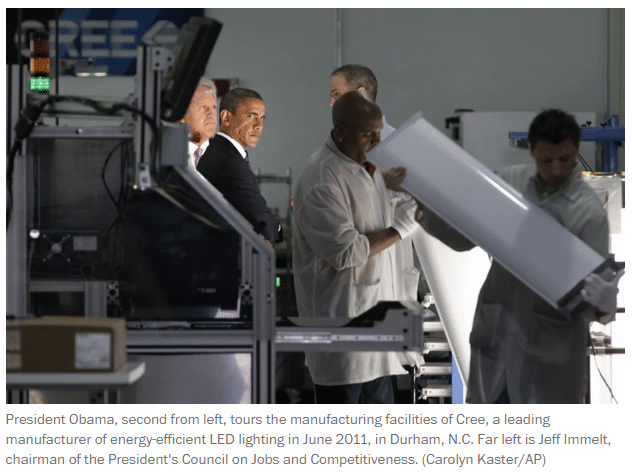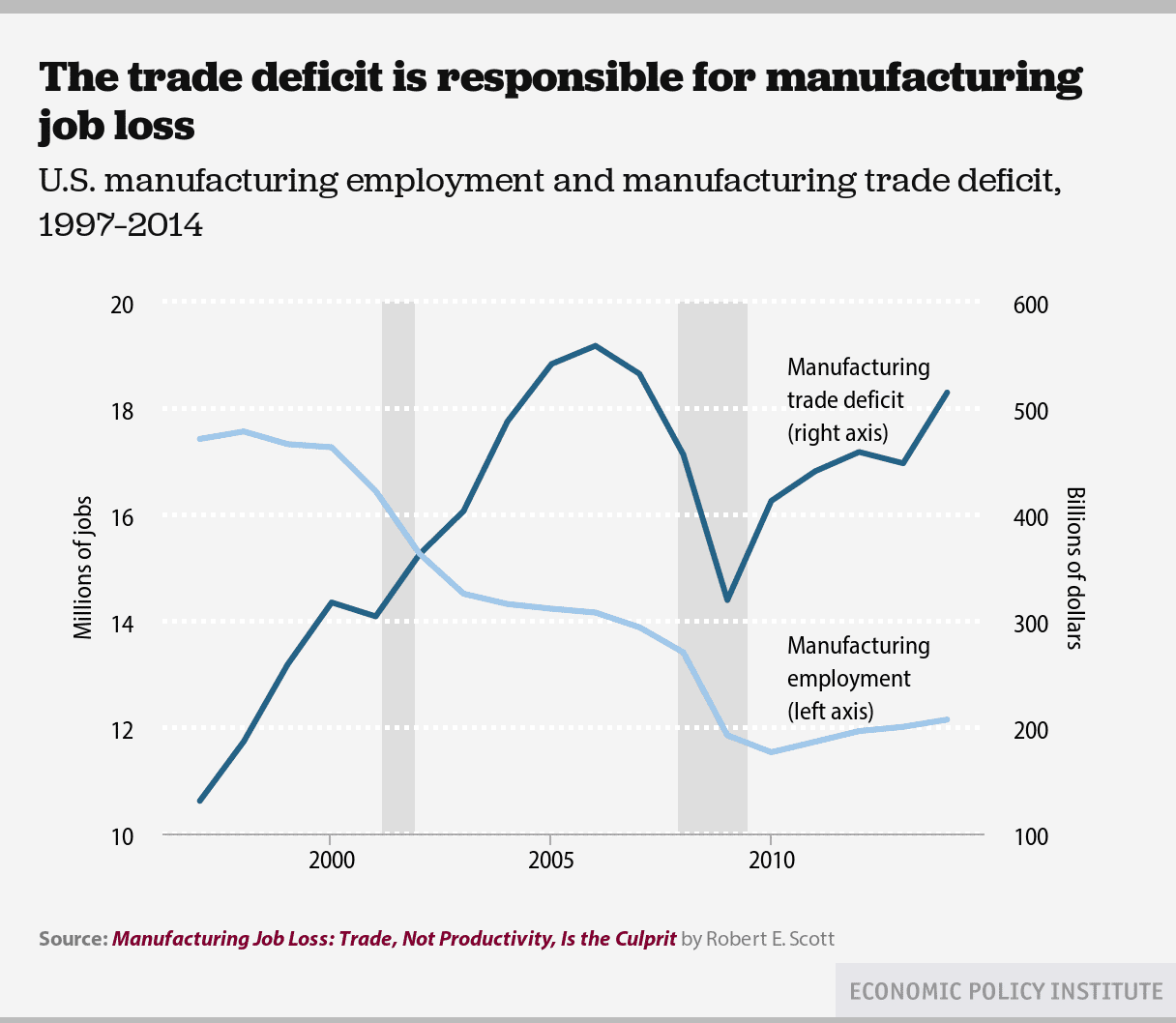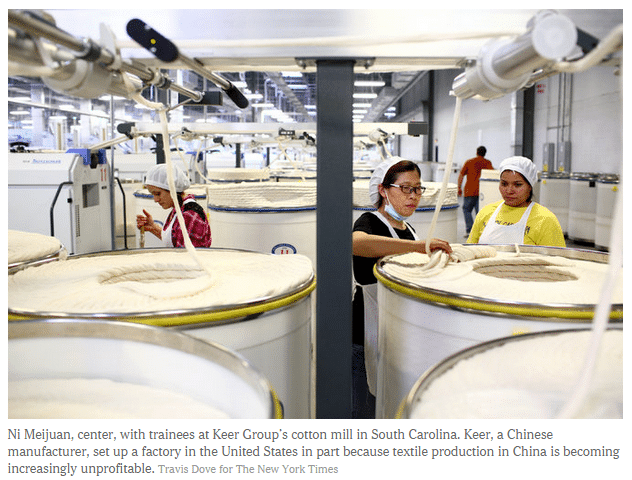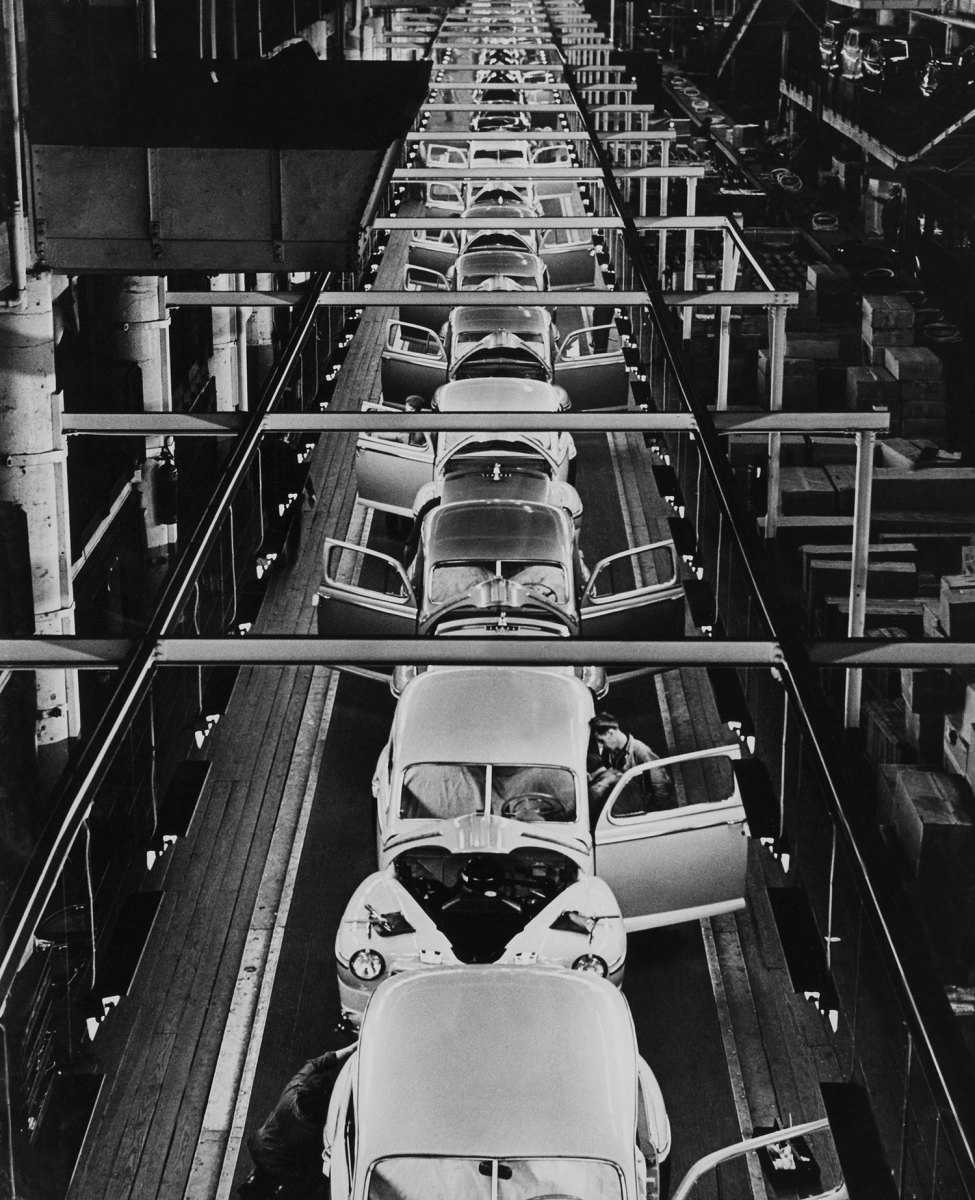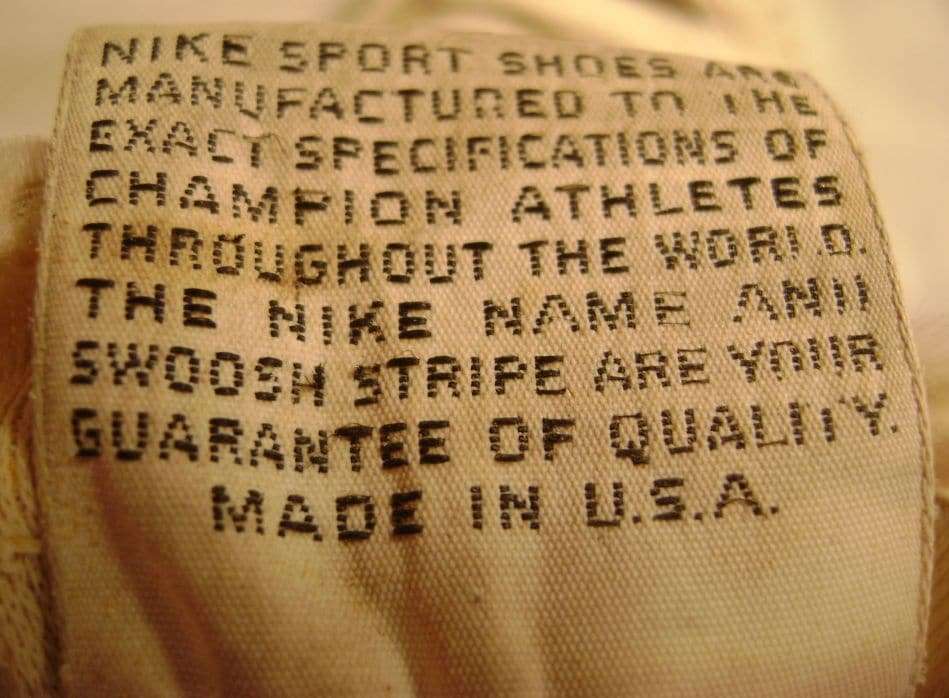The Reshoring Initiative recently announced a program in partnership with Walmart to help companies manufacture more consumer products in the United States. Read more
It took less than a year for America’s factory output to rebound from the 1991 recession. It took 3½ years to bounce back from the 2001 recession. Now, six years clear of the Great Recession, manufacturing output still hasn’t returned to the pre-crisis levels it reached in 2007, according to revised economic data from the Federal Reserve. Read more
Growing trade deficit and the collapse of manufacturing output following the Great Recession are directly responsible for the loss of 5 million U.S. manufacturing jobs that occurred between 2000 and 2014. As the figure below shows, manufacturing started rapidly declining in 2000, just as the U.S. manufacturing trade deficit began to rise sharply. A rising trade deficit indicates that U.S. manufacturers are losing business to manufacturing industries in other countries like China and Japan, who manipulate their currency to make their goods cheaper and therefore more appealing to consumers in the United States and elsewhere. This leads to reduced demand for goods produced by U.S. manufacturers, both at home and abroad.
RELATED ARTICLE: Manufacturing Job Loss: Trade Deficit, Not Productivity, Is the Culprit[p][/p]
Between 2000 and 2007, growing trade deficit in manufactured goods led to a loss of 2.6 million manufacturing jobs. When the Great Recession hit and consumers pulled back on their spending, the collapse in demand for U.S. manufactured goods caused a loss of 2.3 million additional manufacturing jobs. While in the past the manufacturing industry has typically regained most if not all jobs lost during a recession, manufacturing employment after the Great Recession has experienced an anemic recovery—only 900,000 of the 2.3 million jobs lost have been recovered since 2009. This is because the manufacturing trade deficit has skyrocketed since 2009 as a result of the rapid growth of imports from China and other currency manipulators. The manufacturing trade deficit grew from $319.5 billion in 2009 to $514.6 billion in 2014—very close to its pre-recession peak of $558.5 billion in 2006.
SOURCE: Economic Policy Institute
Twenty-five years ago, Ni Meijuan earned $19 a month working the spinning machines at a vast textile factory in the Chinese city of Hangzhou. Read more
Less than three months before China shocked markets with a surprise devaluation of its currency, a top Chinese exchange-rate official told a closed-door gathering that Beijing had no need for such a dramatic move. Read more
Democrats and Republicans disagree on a lot, but leaders of both parties are as keen now as they were decades ago to embrace manufacturing jobs. Read more
It’s been two and a half years since Walmart announced its so-called “U.S. manufacturing initiative”, which means it’s time for another PR-heavy, Walmart manufacturing “summit,” this one in Bentonville, Arkansas on July 7th and 8th. Undoubtedly, Walmart will use the summit to deliver feel-good talking points to the media, so this seems like a good time to review some facts about Walmart’s impact on the U.S. manufacturing sector, past, present and future. Read more
When President Obama visited Oregon in 2011, Nike Chief Executive Mark Parker foreshadowed what was on the sneaker giant’s horizon. Read more
As it prepared to welcome President Obama to its headquarters campus Friday morning, Nike announced it would pour more money into advanced footwear manufacturing in the United States if and when the Trans-Pacific Partnership free trade agreement is approved. Read more
INQUIRIES
Media: PR Department
Partnership: Marketing
Information: Customer Service


